In my last two posts on Islamabad (here and here) I talked about the woods and the forest trails that I love so much and take to them whenever I can.
In those woods, at the foot of the Margallas, until a few years ago, there was a very large and very old tree, believed to be several hundred years old. Its gnarled branches sprawled like an umbrella over a very large area around the tree.
It was a pipal tree (ficus religiosa). Pakistani residents of Islamabad were generally unaware of the significance of this tree. But the tree attracted many expatriate residents, mostly from South East or East Asian diplomatic missions in Islamabad. They would come and simply contemplate the tree and its surroundings. Someone had even a built a concrete kiosk and a concrete bench next to the tree for visitors to sit. The tree was believed to be a Bodhi tree.
What is a bodhi tree and how it came to be in Islamabad?
As many of us would remember from our history books, that is, if one graduated before the 1970s, for afterwards they stopped teaching history of pre-Muslim era of the subcontinent in schools, prince Siddhartha Gautuma meditated under an old pipal tree in Gaya, a village near Patna, Bihar, some 2,500 years ago. Ultimately he achieved nirvana, or was “awakenedâ€.
Consequently, the tree under which he sat was named Bodhi, meaning “awakening.†Sidhartha Gautuma became Buddha (the awakened) and the village came to be known as Bodh Gaya, the name it still carries today. The Bhodi tree that grows in Bodh Gaya today is believed to be a direct offspring of the original Bhodi tree.
In the centuries after Buddha, the Bodhi tree became a symbol of Buddha’s presence and an object of devotion for Buddhists.
A little more history before I get to the pipal tree in the woods of Islamabad.
King Ashoka (died 232 BC), the third Maurian king, converted to Buddhism and became a great advocate of the religion and actively propagated Buddhism throughout his empire. The Mauran Empire included, other than the present Northern India, the Gandhara region, which included the area around present day Islamabad, the Peshawar valley and parts of Afghanistan and Iran. Taxila (then Taxshashila), Peshawar (then Parshpura) and Charsaddah (then Pushklavati) were important cities of Gandhara. It was at this time that Taxila reached the peak of its development and became the center of Buddhism. Chandra Gupta Mauria and Asoka spent time at Taxila and so did their famous political adviser, Chanakya, who taught at Taxila.
King Asoka’s daughter, Sanghamitra, who became a Buddhist nun, is said to have taken a cutting of the Bohdi tree from Bhod Gaya to Sri Lanka and planted it at Anaradapura, the ancient capital of the island, where it still grows. Many temples throughout the Buddhist world have bodhi trees growing in them, which are or are believed to be offspring of the one from Anaradapura.
Now, back to Islamabad.
The old pipal tree that grew in the woods of Islamabad was also believed to be “descendent” of the Bodhi tree in Gaya, possibly planted, centuries ago, by a devotee, alongside a temple that might have existed there. Taxila, as the crow flies, is only a few miles from Islamabad, and is full of Buddhist monuments – stupas, statues and remains of monasteries.
In the 1980s, Ziaul Haq ruled Pakistan. In his zeal to “Islamize†the country, he encouraged and helped build madrassas all over the country, many with Saudi money. One such madrassa was built in the woods of Islamabad, not far from where the Bodhi tree stood. Over the years, the madrassa expanded, as most madrassas do, violating the building codes and encroaching upon state land, to become one of the largest madrassas in Islamabad. Today, it occupies 5-7 acres of prime real estate in Islamabad and has a sprawling building complex, and a very large playing field – probably larger than any school or college in Islamabad might have.
The madrassa houses a couple of thousand students ranging in age from 6 to 26, or even older. One sees them during breaks in their classes when they swarm into the playground and overrun the nearby children’s park, driving the children and women out. It is a bizarre sight to see young bearded men swinging and sliding on the swings and slides meant for children. Other contributions of these madrassa students to the community are: street signs defaced with posters soliciting sacrificial animal skins, and vandalized letterboxes.
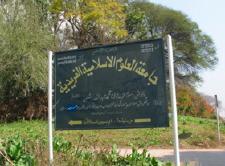
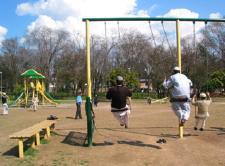
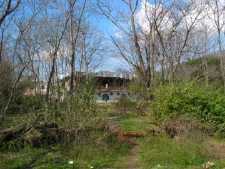

Fortunately, because of its very large girth, the Bodhi tree did not burn down completely even though it was badly damaged. It survived with half of its branches still intact. The city administration tried to preserve what was left of the tree. They even posted guards at the site for sometime after the incident to protect the tree from any further attacks. When I saw it last, a few years ago, it was still green and seemed as if it was struggling to recover from the wounds inflicted upon it.
Last week, having returned to Islamabad after two years, I decided to look up the tree, as if you would look up an old friend, and see how it was doing. I was shocked. There was no tree there! Only a few logs of the decapitated tree were lying around like dead bodies. The concrete kiosk next to it was partially demolished, its remaining walls covered with graffiti, and the bench was gone. Through the woods, I could also see the madrassa, some construction work going on it. Still expanding, I guess.
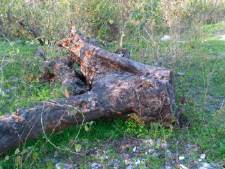
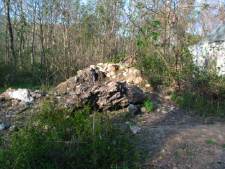
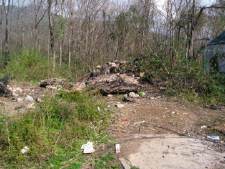
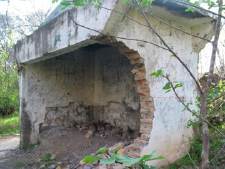
(All pictures, except the first, by the author)
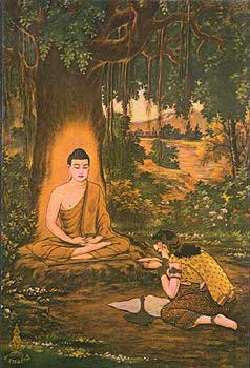




















































I was reading some blogs on a very popular Internet community named orkut about “”haunted places in Islamabad…someone created a thread about this “”Budha tree and lot of people have shared their experience about visiting that place but no one has tries to reveal its history…that put me into curiostity and I started searching at google and found this article….I would go to that place personally If I could be in Pakistan…anyhow this article is quite informative but this discussion has turned into adverse critism…
Peace ….
Wasn’t it the Holy Prophet (PBUH) who said that you don’t insult their gods so that they won’t insult yours?
The cleansing of Ka’aba is very different from destroying places of worship of other religions. Ka’aba in Islamic theology is the house of God. However the principle can not be applied to other places of worship.
Adnana, Yes you are right, the foundations were laid even before that. Someone I know has a book on that subject. I will try to get and read it. Thanks for the reminder.
Siddiqui,
Would you please want to throw some light on which route did Adam take to travel to Mecca, after he was expelled from Paradise?
Jabir where did I say that Muslims should fix the things within Christianity? Read again what I am saying. It would be pretty lame If I keep repeating same quotes again and again.
What I believe as a Muslim that whatever was performed by Muhammad[saw],Abraham[saw] and then caliphs[RA] was right. None of them gave any hint that they are against people of other faith. I again request you to read again what I tried to say.
Offtopic but as far as I have heard, Ka`ba did exist before Abraham too,infact Kaba was first built by Adam[AS] himself and later Abraham[AS] rebuilt Kaba on similar foundations.